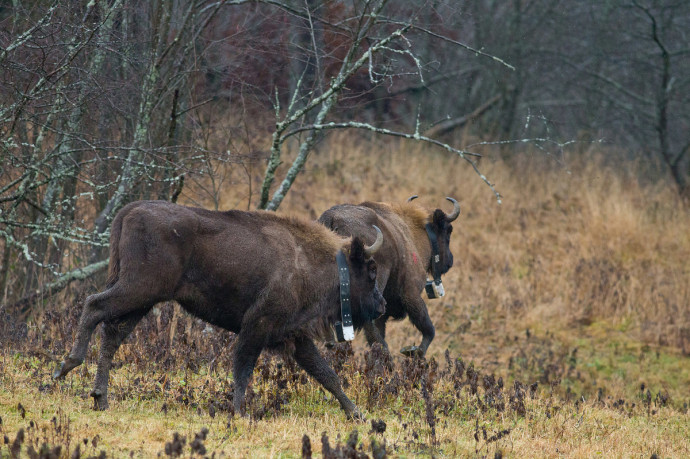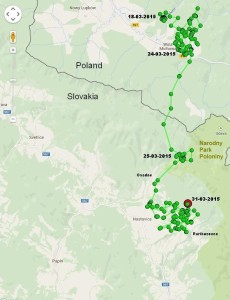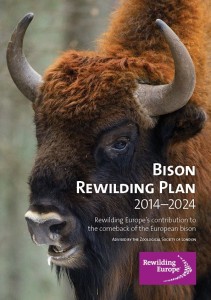The four European bison that were released into the wild in the Eastern Carpathians rewilding area in December 2014 are now free roaming in Poland and Slovakia. Tracking of these animals, carried out by the Carpathian Wildlife Research Station and our local team, again proves the importance of the transboundary movements for wildlife in the Bieszczady Mountains.

In November 2014, two females have been transported by Rewilding Europe from the Eriksberg Wildlife Park (Sweden) to Wola Michowa in the Bieszczady Mountains, Eastern Carpathians and about a month later they were released into the wild. They joined up with two bulls, which were relocated by Polish State Forest from the breeding center in Muczne.

At the end of March, the two female bison crossed the Polish-Slovak border and the tracking information shows that they are still roaming in Slovakia accompanied by these two bulls. All four bison have radio collars with GPS/GSM announcing system and a thorough monitoring on their dispersal and behaviour is done on a daily basis.
-“The European bison have the natural inclination to migrate. Spring came to Slovakia earlier than to Poland and most probably the first sunny days and the greener grass on south facing slopes attracted the bison to cross the border”, says Aleksandra Wołoszyn-Gałęza, rewilding officer and European bison specialist of the Eastern Carpathians team. “Bison don’t need passports nor visas, wildlife crosses state borders easily. The safe transboundary passage for bison and other wildlife is an absolute must for restoring their seasonal migration patterns. This allows them to find suitable habitats in different parts of the year which give them a much better chance for survival”.
Aleksandra, who is in charge of the monitoring on the bison, explains that bison start moving around and exploring new sites shortly after their release into the wild. “In the beginning, the bison moved very little from the enclosure, where they were coming back for supplementary food”, Alexandra explains. “Now, four months after we released them into the wild, it is quite normal they make long distances. It is clear that the process of the acclimatization to the new conditions has been successfully started”.
Field observations confirm that the four bison joined wild bison in the end of March in the Polish part of the mountain and followed them. The four bison are still enjoying the green meadows in Slovakia; the fresh grass is a perfect natural food for them after the harsh winter. Our rewilding team keeps monitoring their movements. The monitoring data show the bison graze on the meadows in the morning and go back to the woods later in the day.
The Eastern Carpathians is one of the few areas in Europe with a free roaming bison population. The current population of the Bieszczady Mountains is estimated at around 303 animals, living in different herds in various parts of this range, and maintaining a contact with a herd of about 20 animals at the Slovak side of the border. Together with local partners such as the Carpathian Wildlife Research Station, Rewilding Europe is supporting this bison population by monitoring, research and population reinforcements.
More information about Rewilding Europe’s work on European bison can be found in the Bison Rewilding Plan 2014–2024, published in December 2014.

